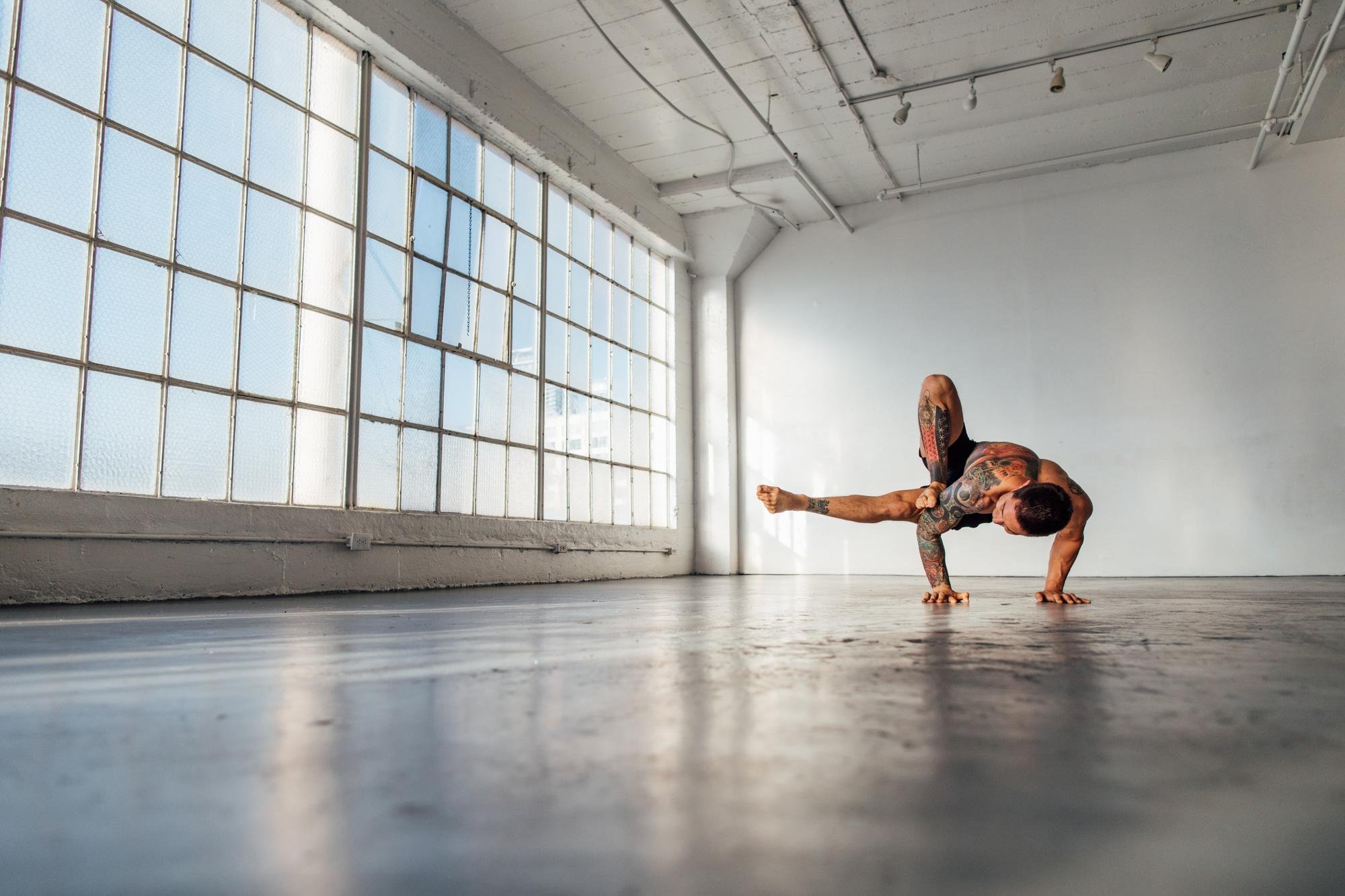Pose Breakdown: Dragonfly
Looking for every kind of challenge in one pose? Dragonfly Pose (Maksikanagasana), sometimes known as Grasshopper Pose (Parsva Bhuja Dandasana), combines twisting, strengthening, balancing, bending, and focus all in one posture for a complex addition to an advanced practice. If you’ve mastered all your Crow Pose variations and you’re itching for more, Dragonfly could make an excellent new goal.
In this asana, Chaturanga Dandasana arms hold aloft a complex position with a lower spinal twist, a bent leg, and a largely-unsupported straight leg. Before taking this on, make sure you’re fully comfortable with similar arm balances like Flying Crow and Eight-Angle Pose — you don’t want to accidentally put too much pressure on your spine!
(Please note: While there’s a Yin Yoga pose of the same name, this version of Dragonfly is wildly different!)
Benefits of Dragonfly Pose
Strengthens your arms, back, and shoulders
Tones your legs and abdominal muscles
Opens your hips
Improves flexibility and mobility
Contraindications
Avoid this pose or talk with your doctor first if you have any injuries to your arms, wrists, hands, lower back, hips, or knees. Proceed with the same caution you’d use for any inversion, and consult a doctor first if you have high blood pressure or other circulatory issues.
Warm-Up Poses for Dragonfly Pose
Seated Spinal Twist
Low Plank Pose
Standing Figure Four
Baby Grasshopper
Revolved Chair Pose
Half Chair Pose
Side Crow Pose
Flying Crow Pose
How to Do Dragonfly Pose
1.
Lift your right leg up and cross your right ankle over your left thigh with your right foot flexed. Bend your left knee and sink down into a seated figure-four position.
2.
Twist your upper body toward the left and bring your hands to the ground. Squat down to sit on your left heel.
3.
Bring your right tricep into the instep of your right foot. Place both hands on the ground and shift forward, creating a shelf for you to balance on.
4.
Once you feel comfortable, bring more weight into your fingertips and lift your left foot up off the ground. To finish this pose, extend your left leg and bring your gaze forward or down.
Follow Up Poses for Dragonfly Pose
Low Lunge
Standing Forward Fold
Bound Angle Pose
Wide-Legged Seated Forward Fold
Child’s Pose
What Does Maksikanagasana Mean?
“Maksika” means “fly” or “bee” in Sanskrit, and “naga” means “snake” — and “asana,” of course, means “posture.” Throw it all together and you have something at least adjacent to “Dragonfly Pose.”
Sometimes you’ll see this pose’s Sanskrit name listed as “Parsva Bhuja Dandasana,” which literally means “Side Arm Staff Pose.” Chaturanga Dandasana, which you likely practice in most yoga sequences, has the same arm position and means “Four-Limbed Staff Pose.”
Practice Dragonfly and other arm balancing challenges in Dylan Werner’s School of Arm Balance series, available for free with a 14-day trial to Alo Moves.






